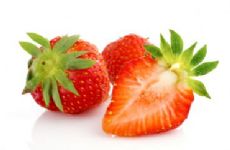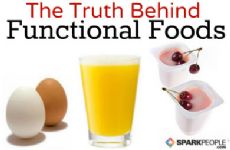|
Raise your hand if you think that sugar is bad for your health. Now keep your hand up if you try to avoid foods with added sugars. I’m guessing most still have their hands up (at least I would hope so). Here's one more question. Keep your hand up if you read the "Sugars" section of the Nutrition Facts label in order to determine how much sugar is in the foods you eat. If your hand is still up, I've got some shocking news for you: That label doesn't mean a thing. Although Nutrition Facts labels were designed to help consumers better understand the foods they buy, many people find them downright confusing. And the whole "sugar" issue is just one of many reasons why. Those of you who are long-time members of SparkPeople.com, our parent site that features free calorie-tracking tools, may have noticed that SparkPeople flat out refuses to include "Sugars" (as in, that section from Nutrition Facts labels) on our Nutrition Tracker. People hem and haw about it because they want to track how much "sugar" they are eating. But we didn't allow the option because we know just how misleading that label is. The "sugars" listed on a food label are NOT synonymous with "added sugars," although most people think that is exactly what it means. To understand what they truly are (a specific form of carbohydrate), here's a Nutrition 101 explanation for you. Carbohydrates are a macronutrient (the other macronutrients are protein and fat) that your body uses to make glucose, which gives you energy for everything from thinking to exercising. Carbohydrates are found in many foods, including fruits, vegetables, breads, grains, dairy products, caloric sweeteners (everything from white sugar to corn syrup to agave nectar)—and the foods that contain them. Carbohydrates can further be categorized into two main types:
A better indication is to look for the various names of added sweeteners in the ingredients list. When it's within the top 3-5 ingredients, or listed multiple times on a list, you know it's a pretty heavily sweetened food. Still, that won't tell you just how much sugar it contains. Confusing, right? That's why many consumer and health groups are advocating for food labels to tell us just how many grams of added sugars a food contains. That sure would make it easier to make comparisons, wouldn't it? That could help people avoid all the sweet stuff that we know is correlated to our increased girth and possibly to a host of other health problems as well? After all, the American Heart Association, the 2010 Dietary Guidelines, MyPlate.gov, and countless other groups recommend that consumers limit their intake of added sugars. Wouldn't such a label make it easier for them to do just that? So recently, the FDA released plans to study how an "added sugar" label would affect consumer choices. They requested public comment on their plans to do this study. Here are some groups who publicly commented against the inclusion of "added sugars" on food labels:
Whether nutrition labels ever change in this case or not, you can access a USDA document of the added sugars in 2,000 foods by clicking here (PDF). And here's another little trick from SparkPeople's Dietitian Becky: "When you see 'grams' of sugar listed on a label, divide the number by 4. This will tell you how many teaspoons of sugar are in a food. Sure, it may not ALL be 'added' sugars, but in the case of sweet foods or treats, it's probably pretty accurate. This method reveals that a large soda or pastry contains 10 teaspoons of added sugar! Visualize eating that amount of sugar by the teaspoon—and you may just decide to skip that sweet treat after all." Learn More 15 Surprising Sources of Added Sugar Breaking Your Sugar Addiction The Truth about 'Natural' Sweeteners This blog has been reviewed and approved by SparkPeople nutrition expert, Becky Hand, Licensed and Registered Dietitian. Are you trying to limit your sugar intake? Would you like to see see "added sugars" on nutrition labels? Why or why not? |
More From SparkPeople
|









.jpg)












